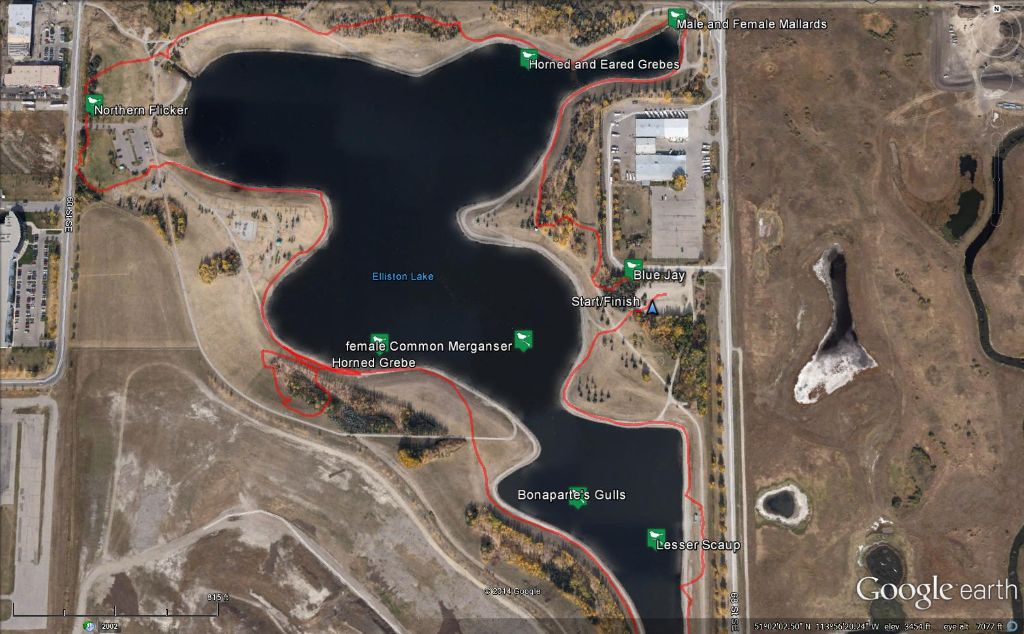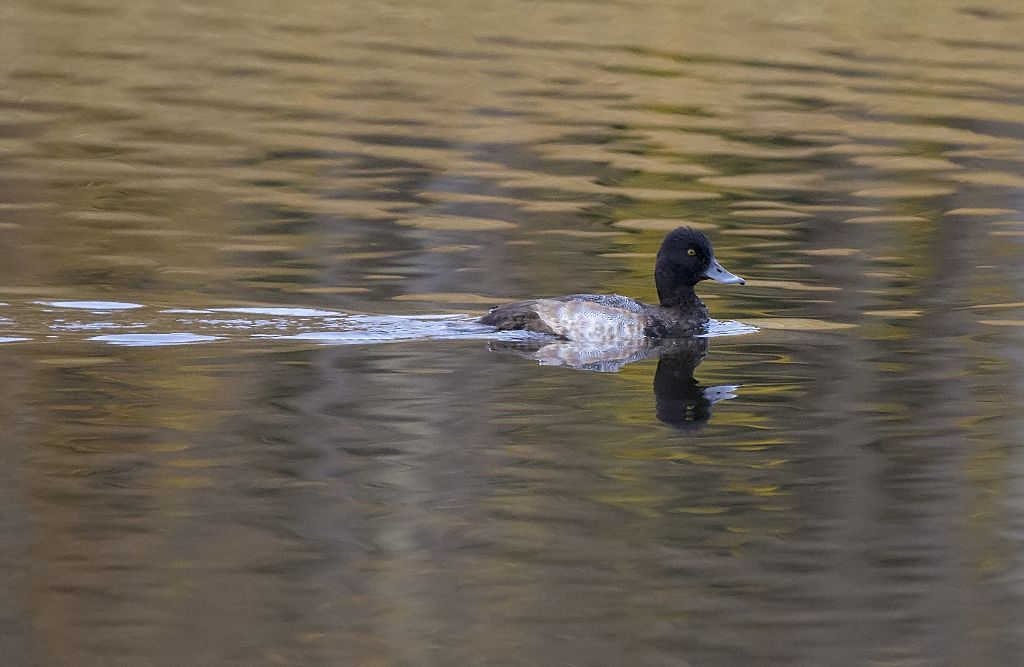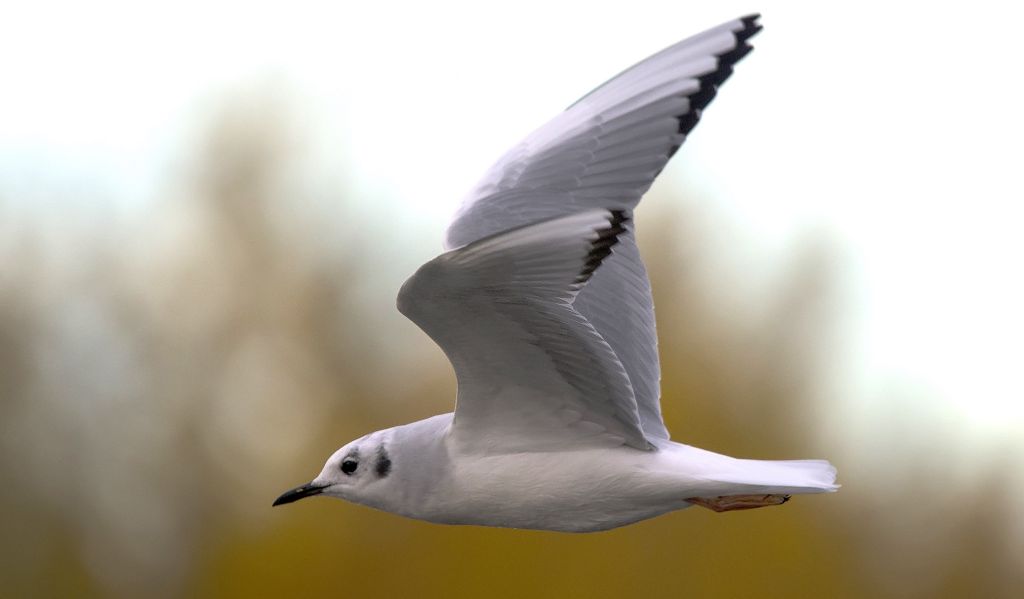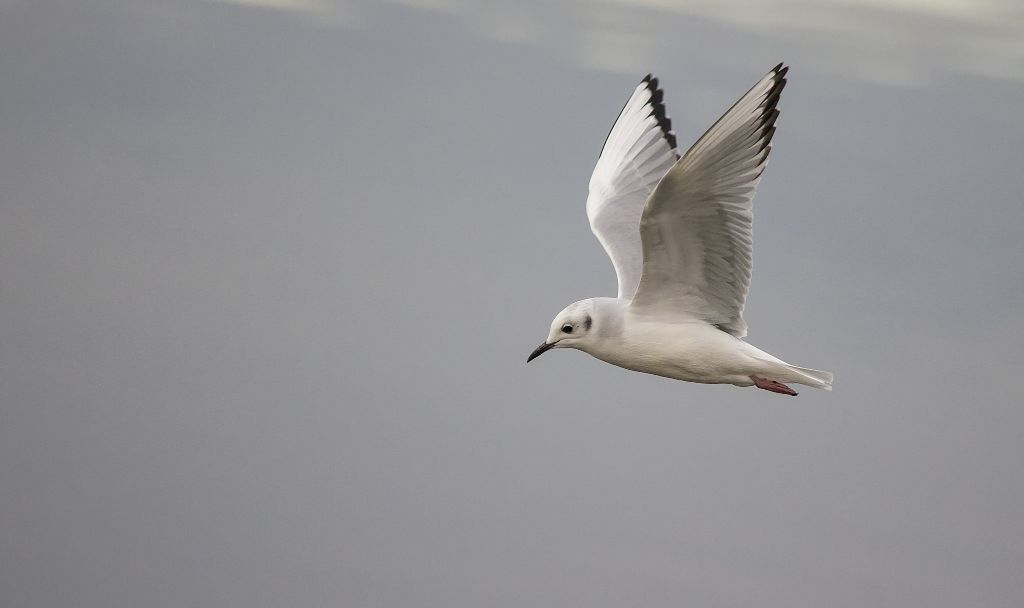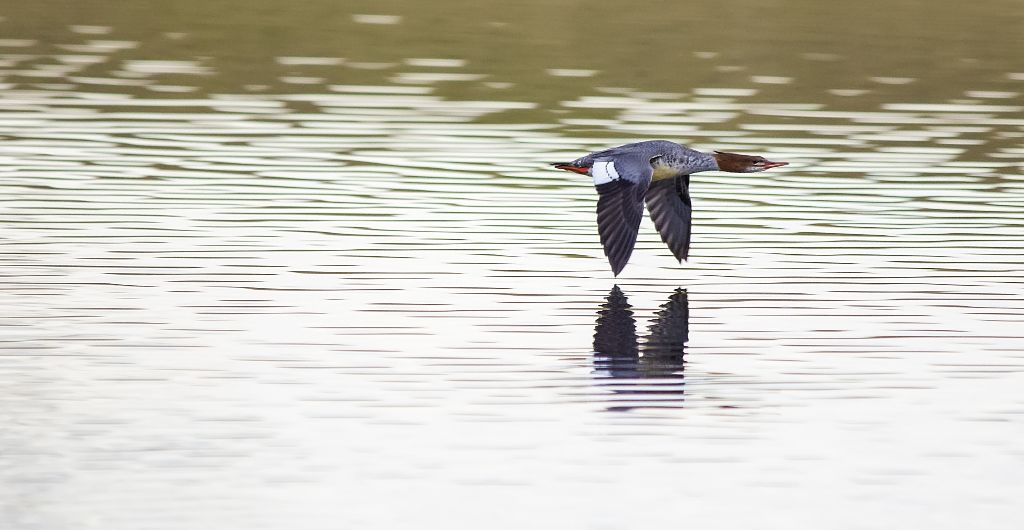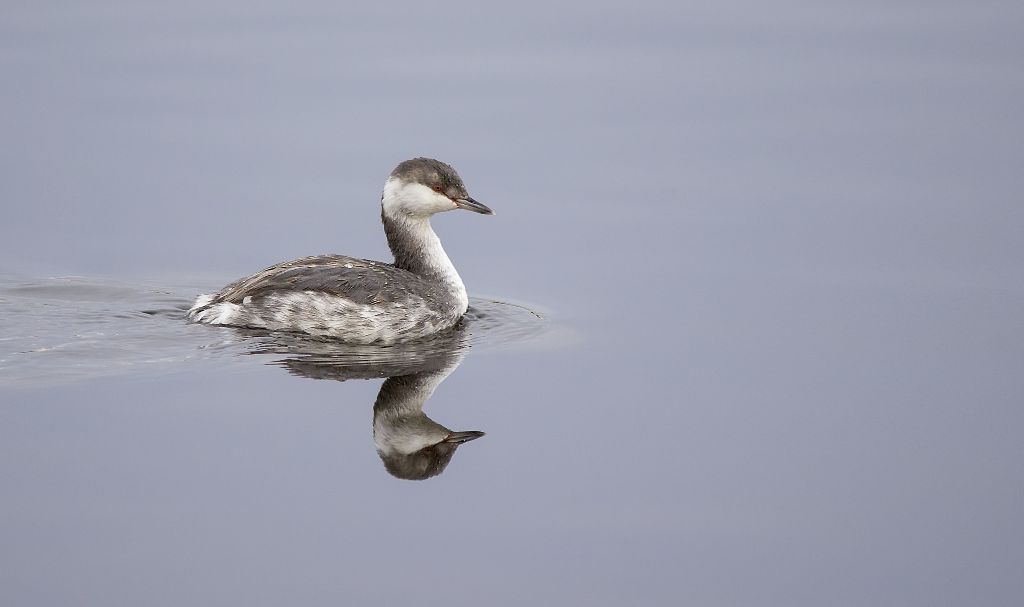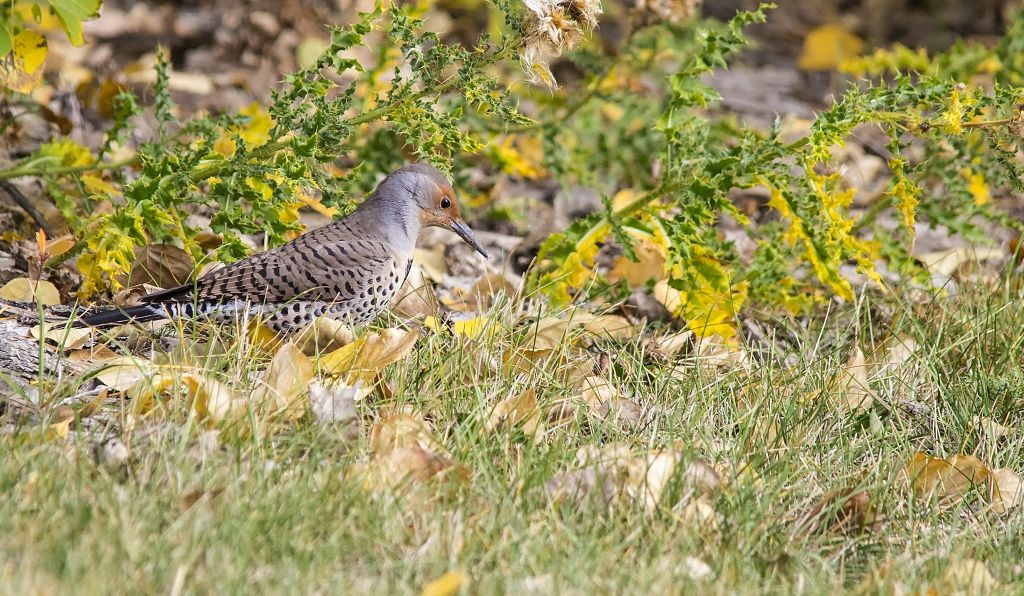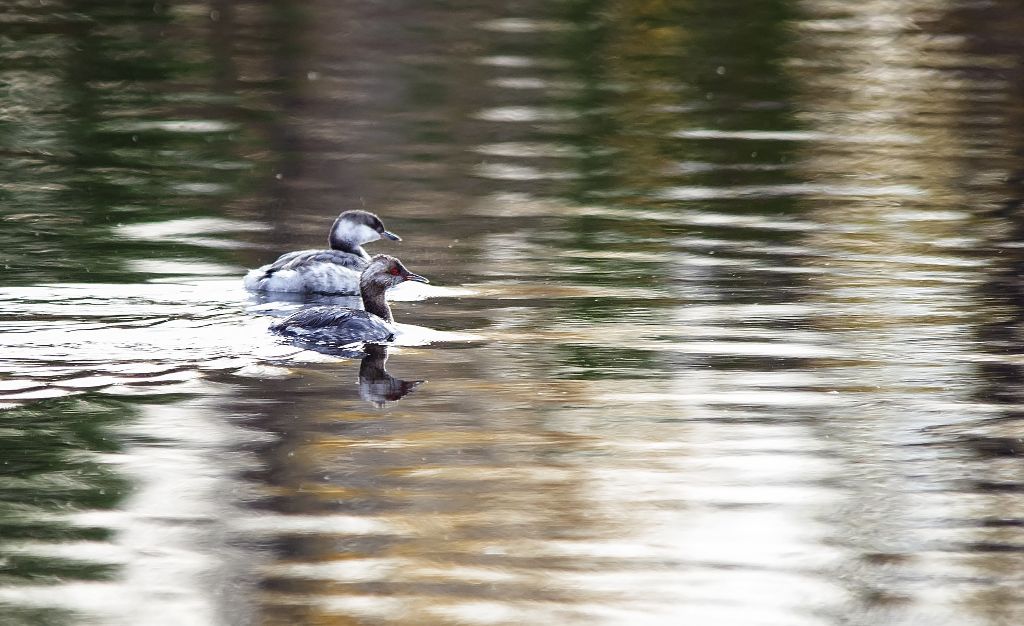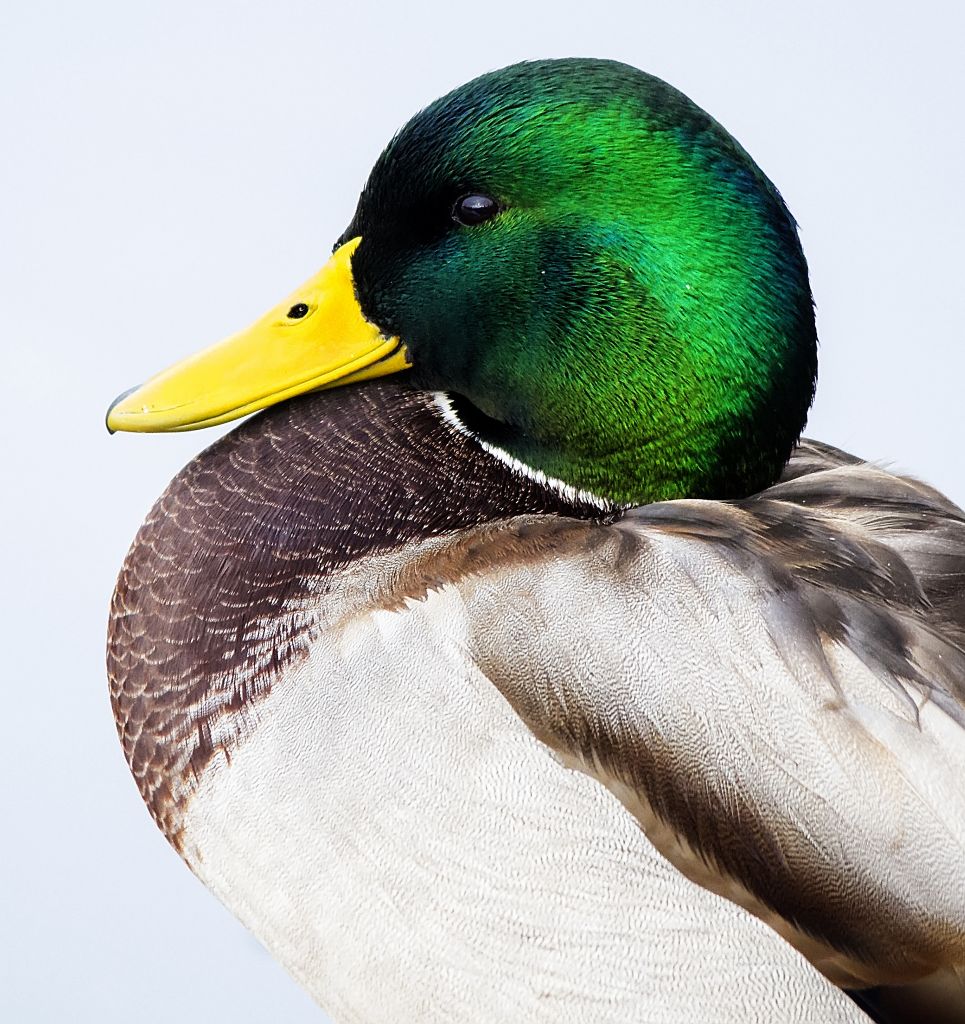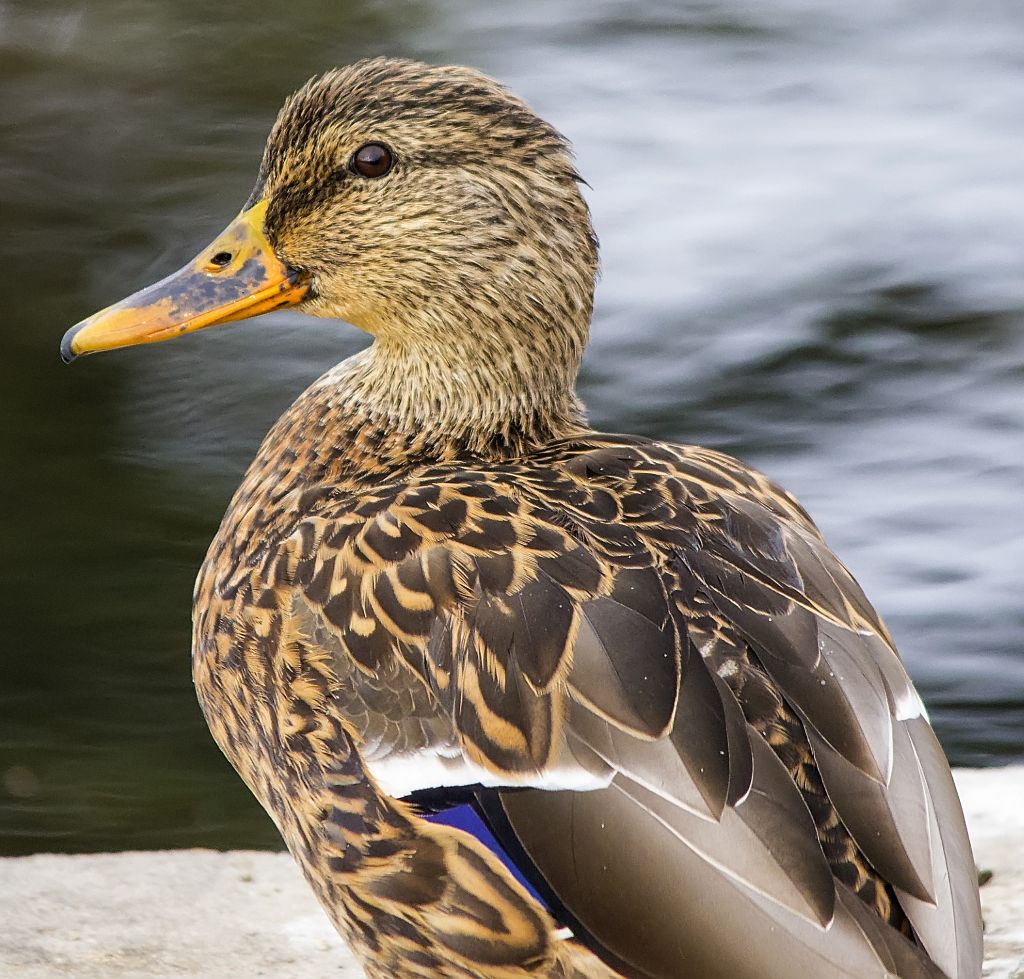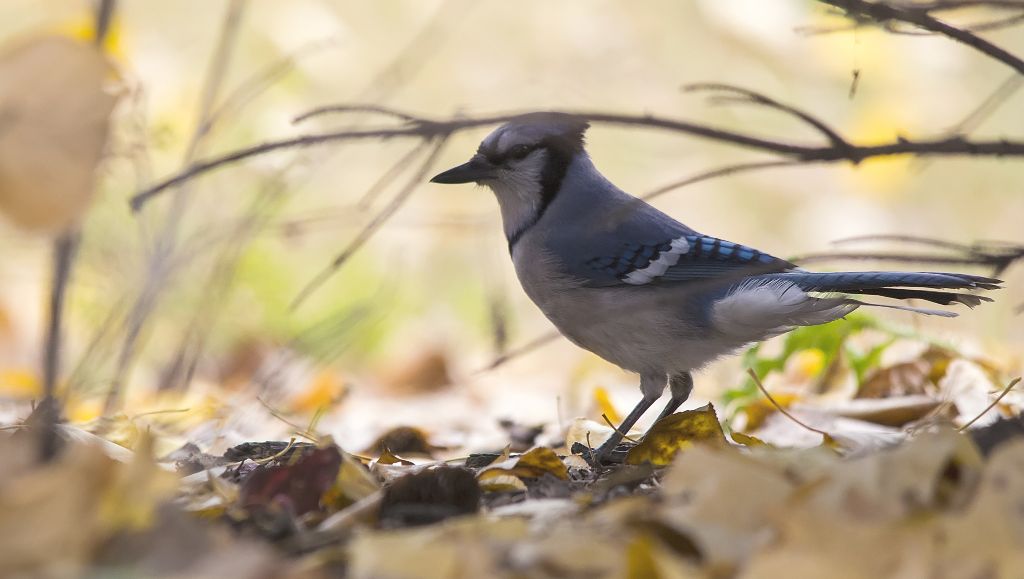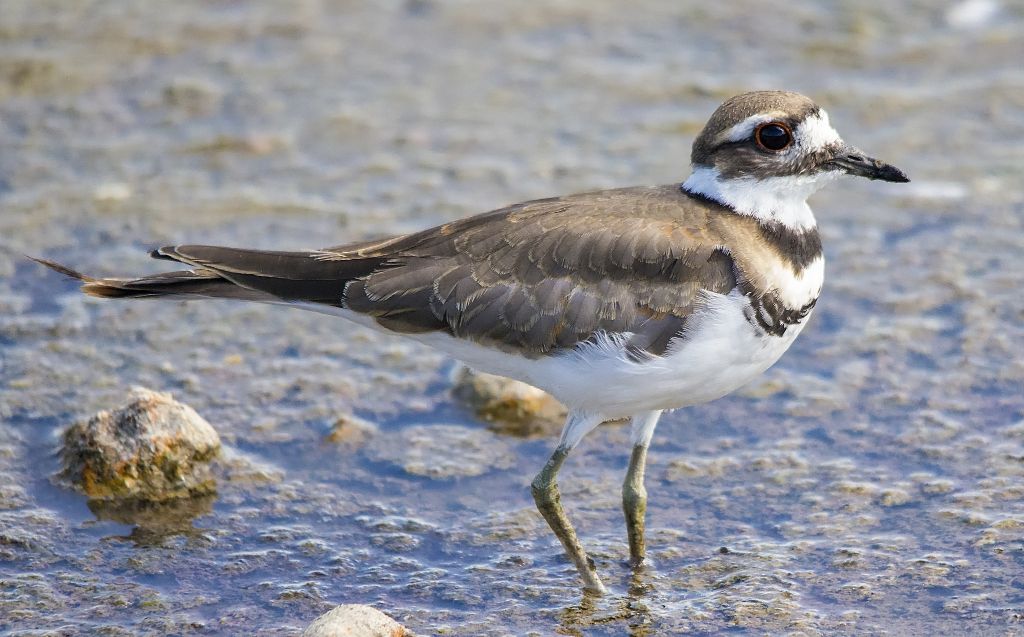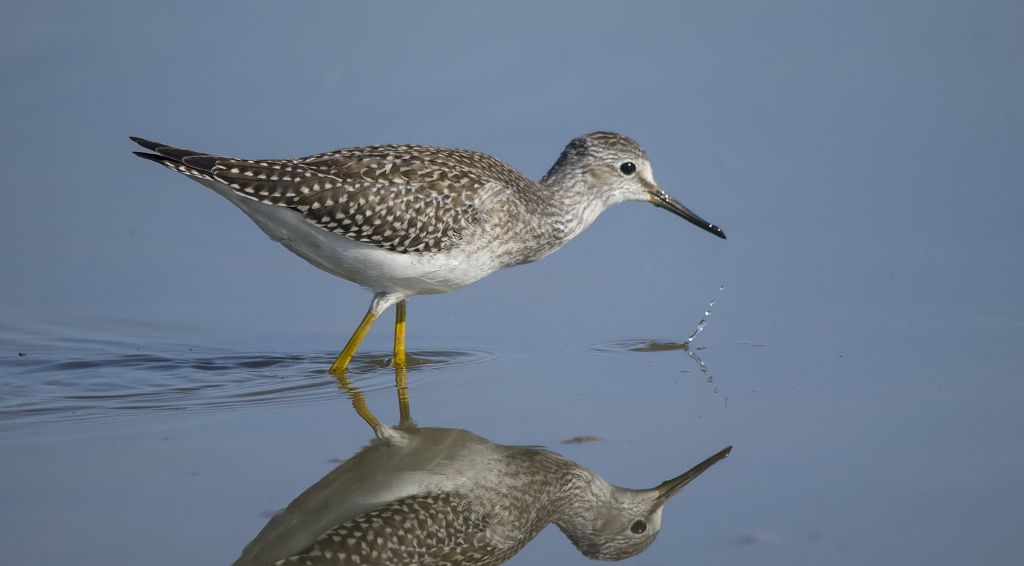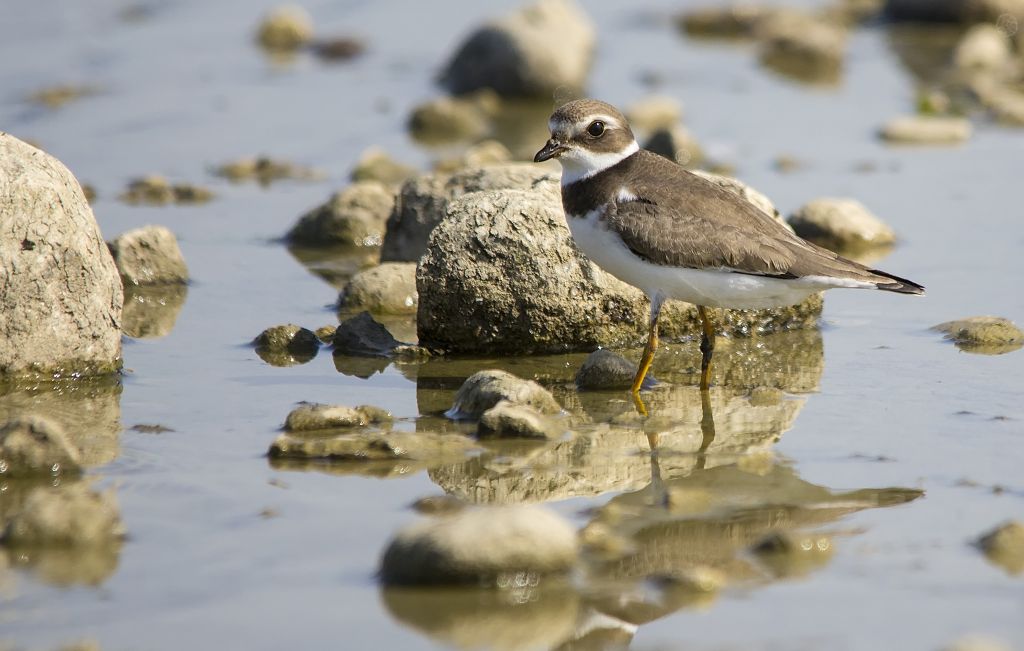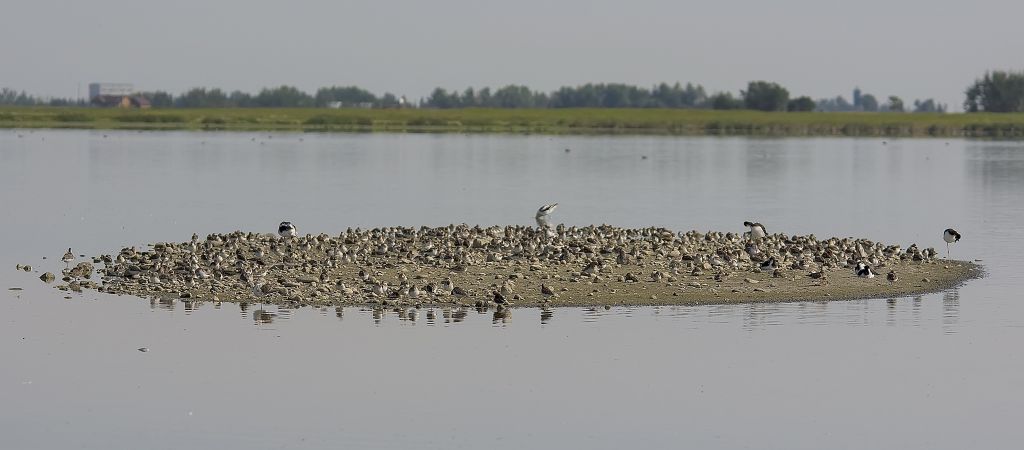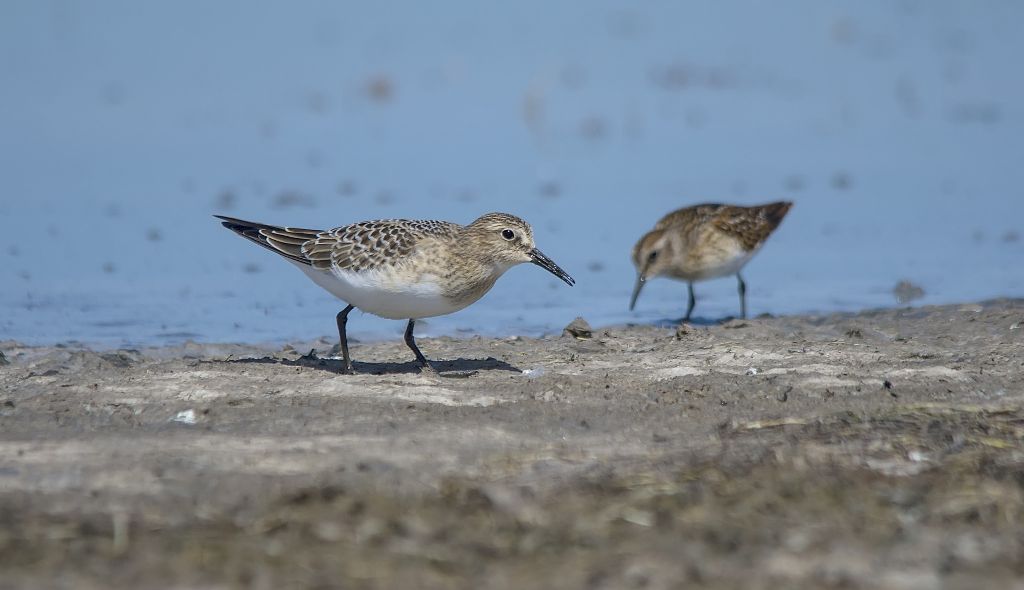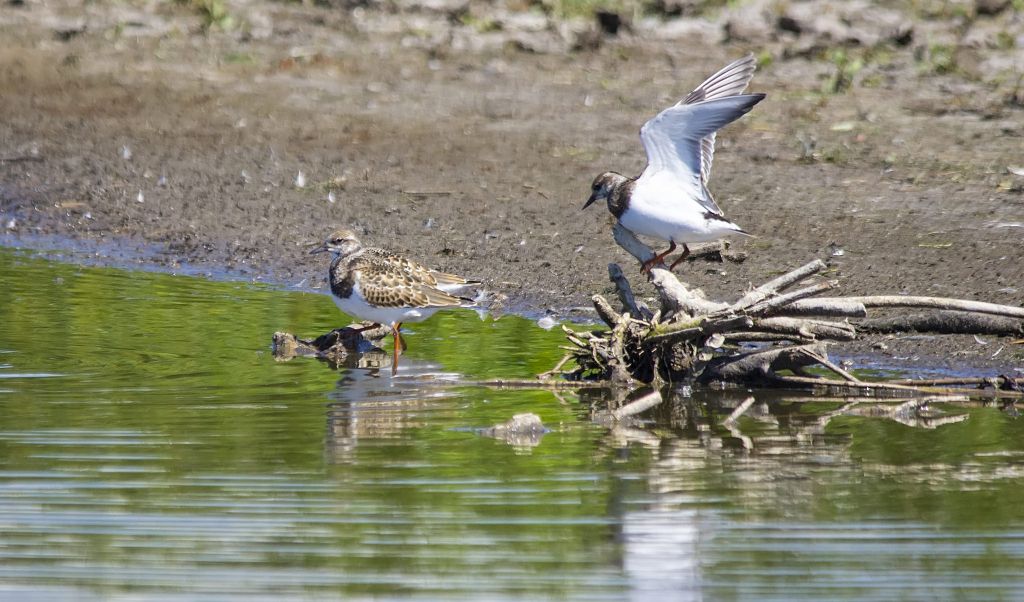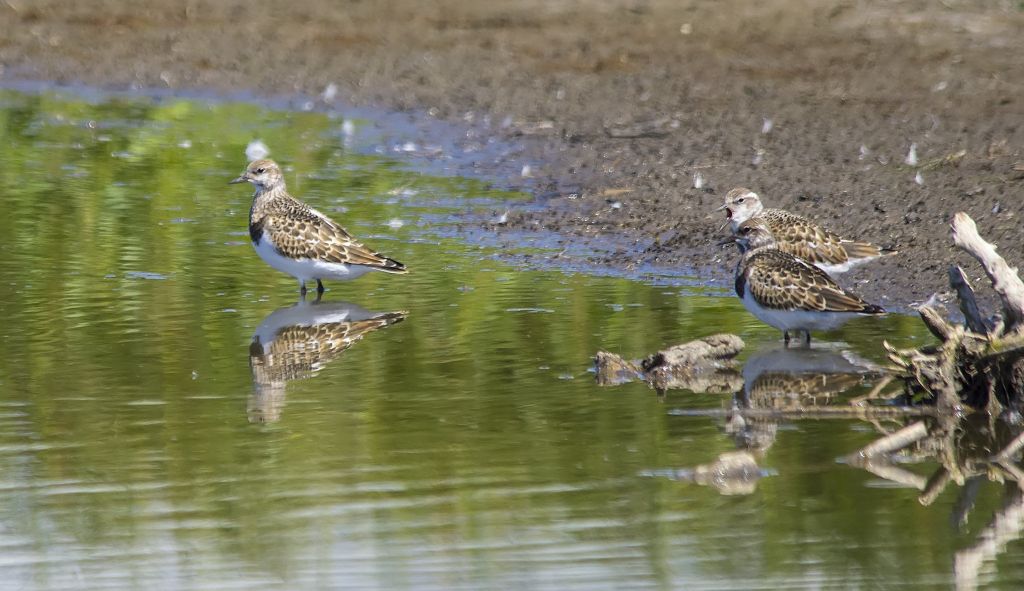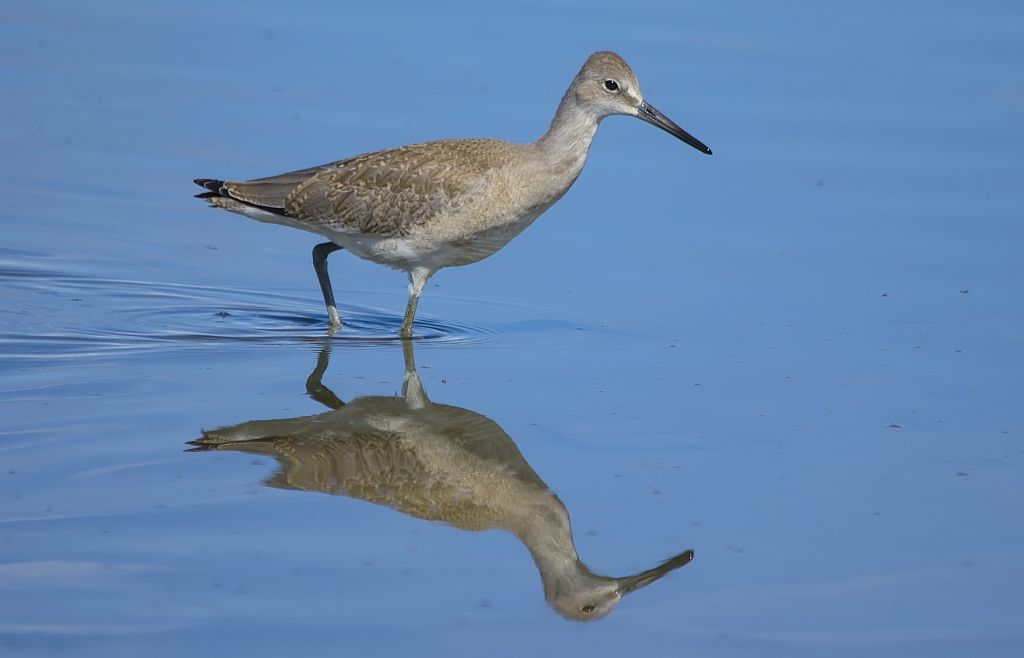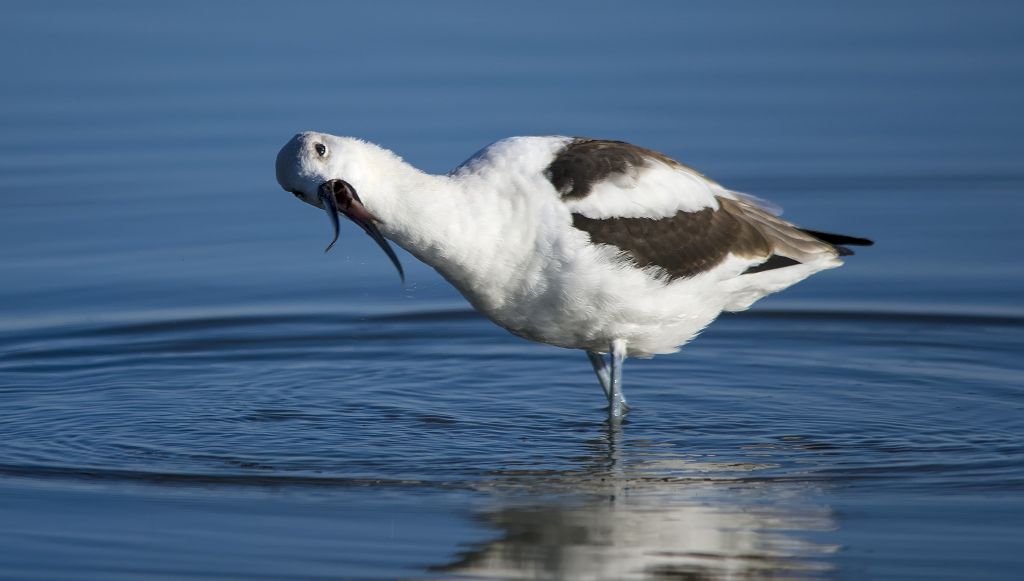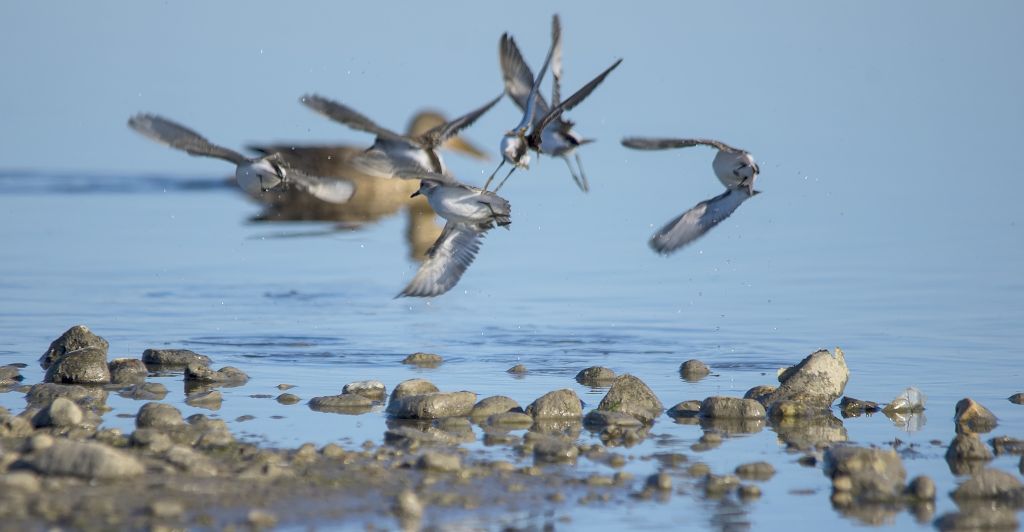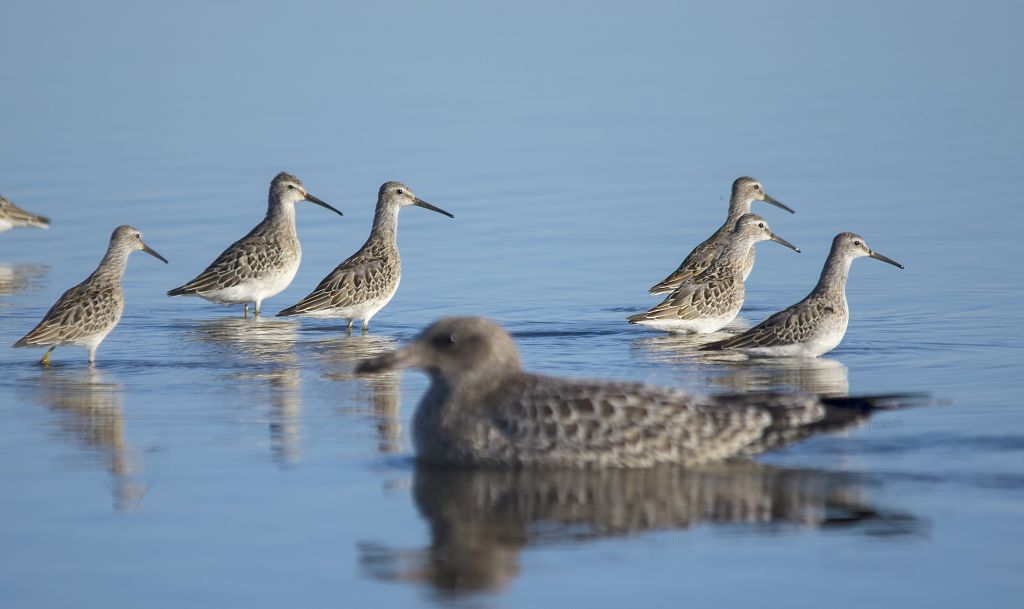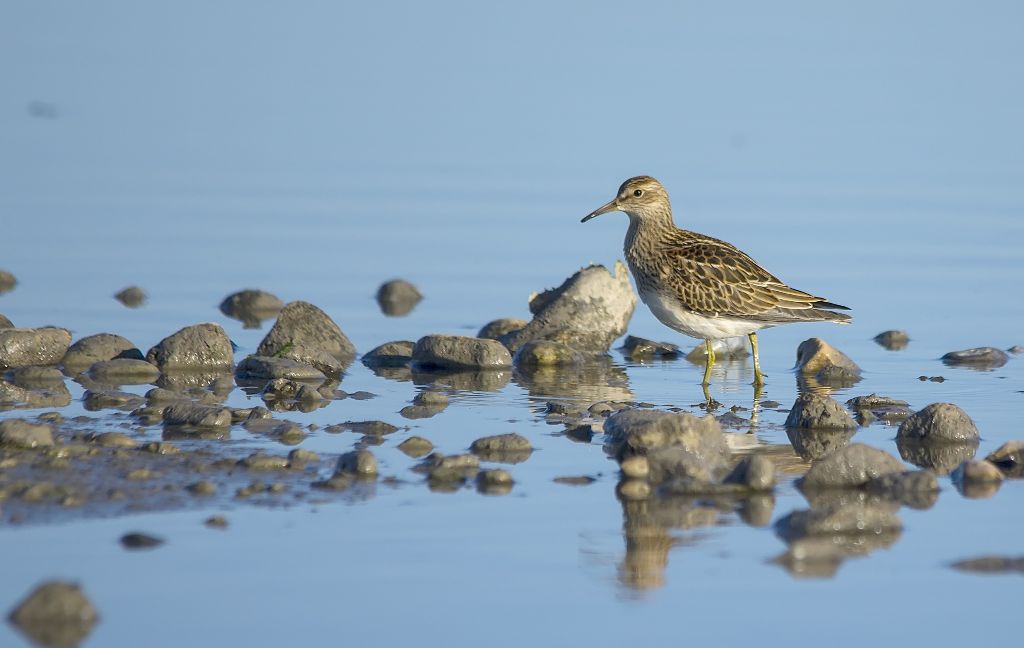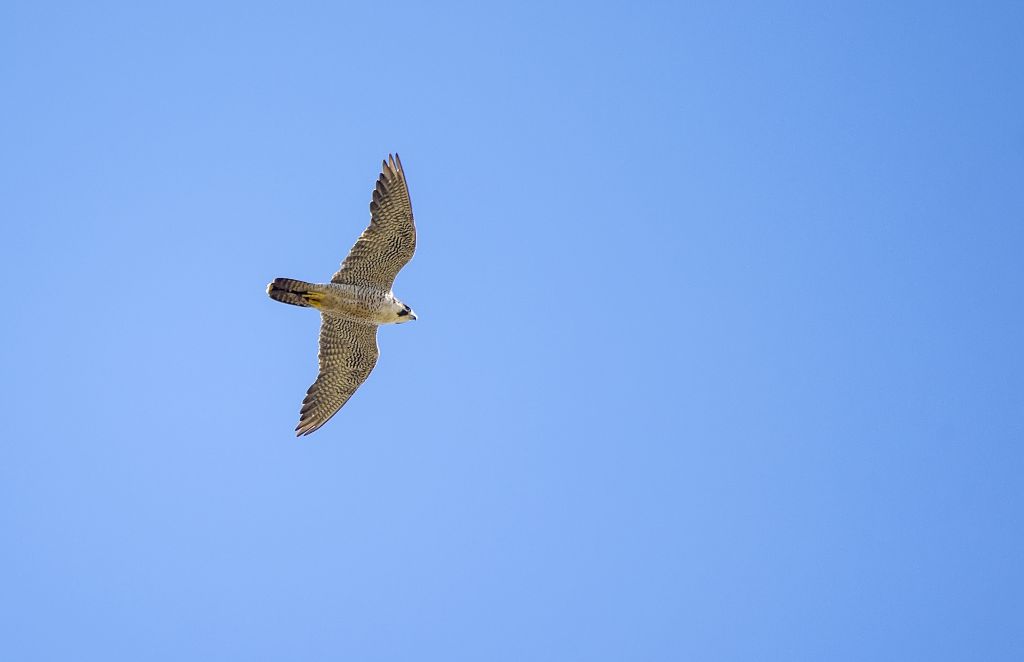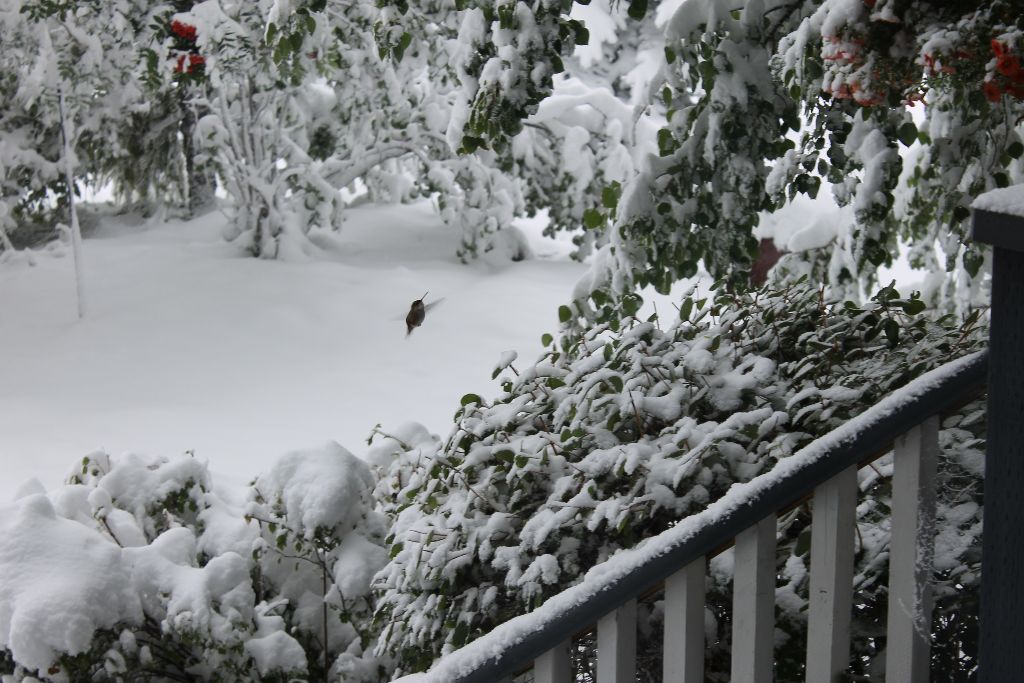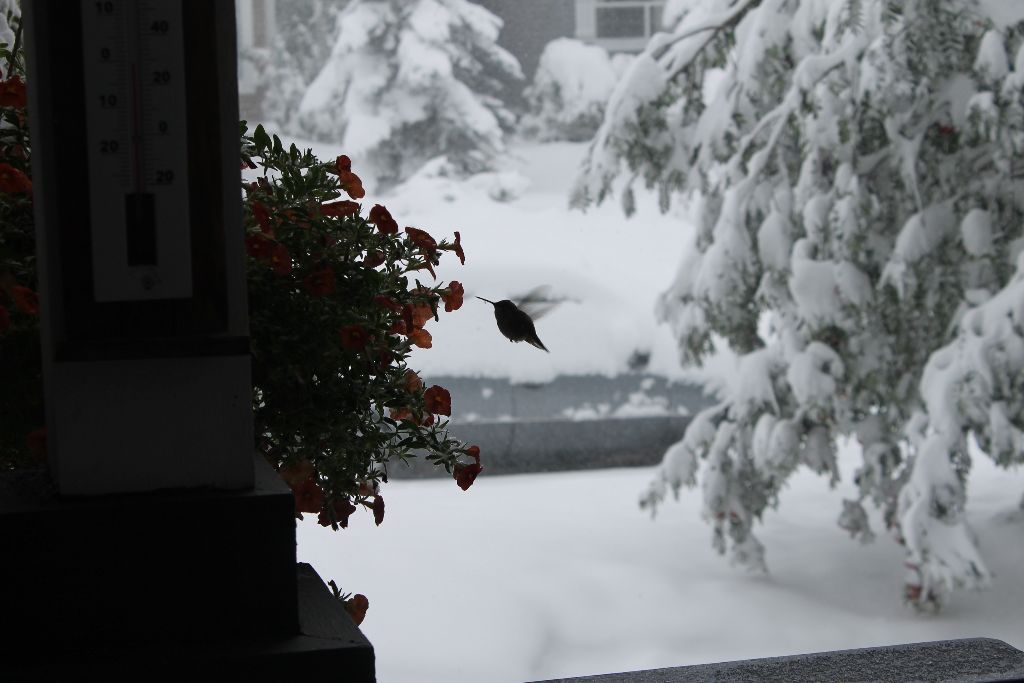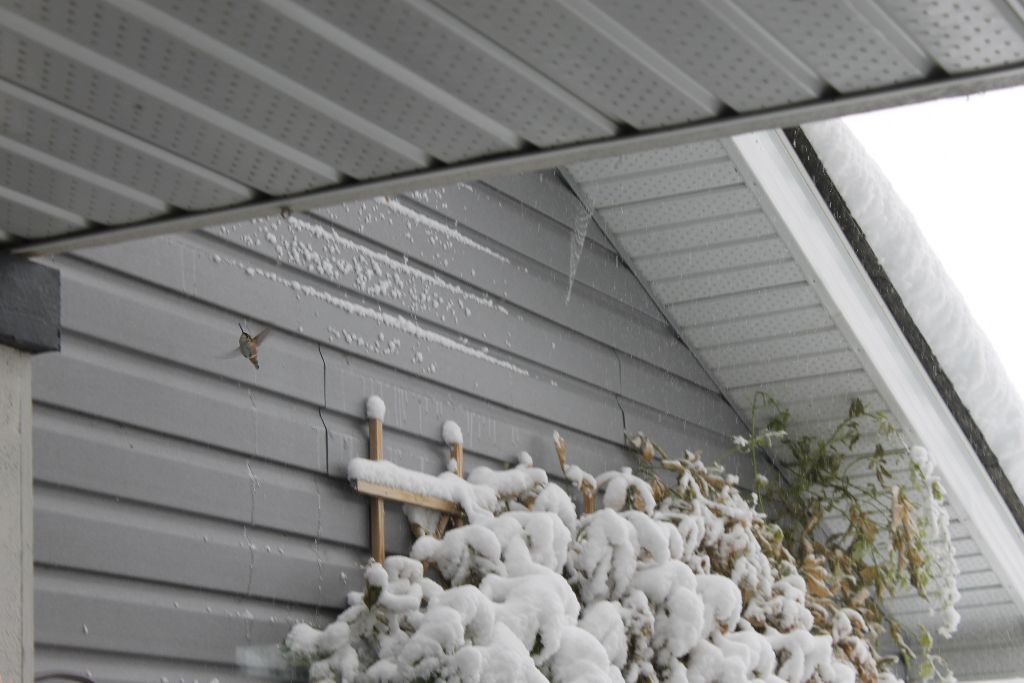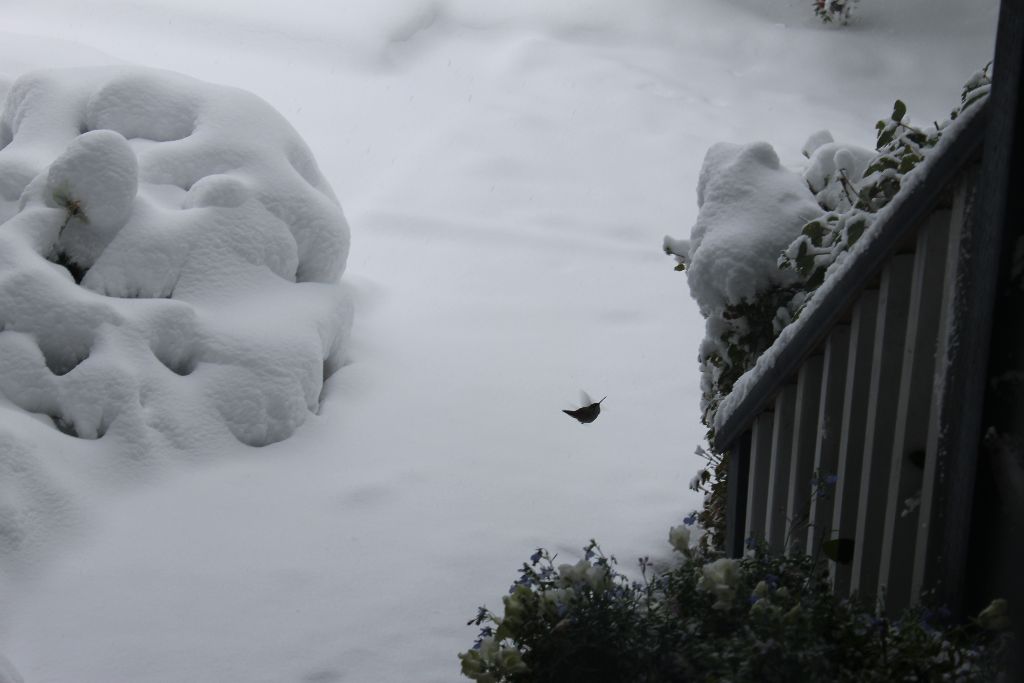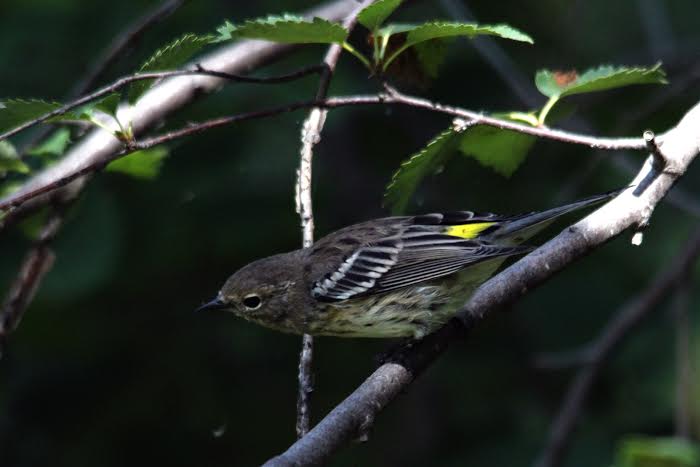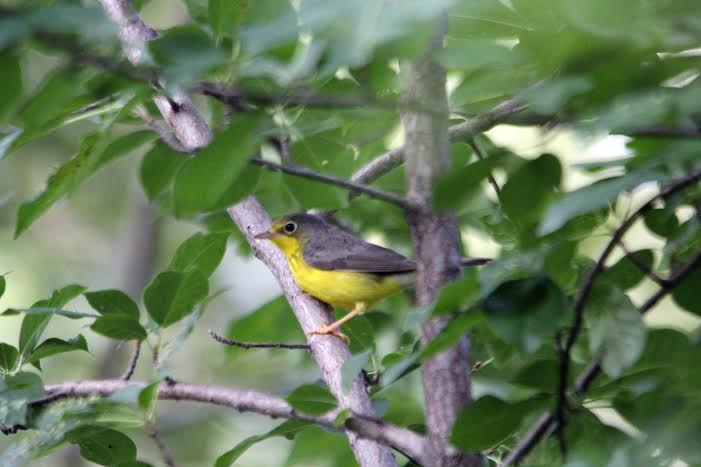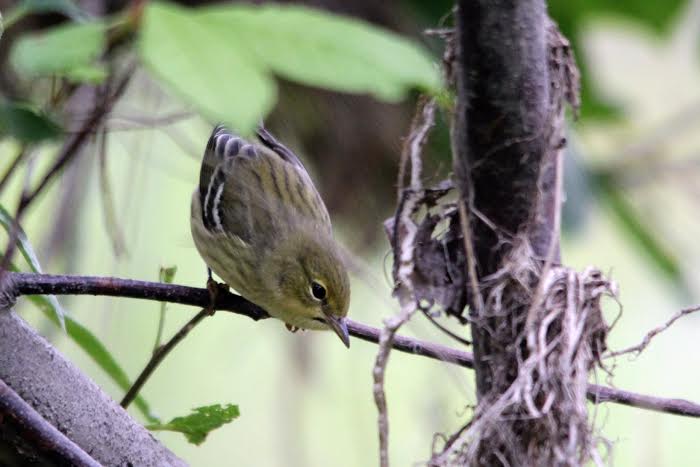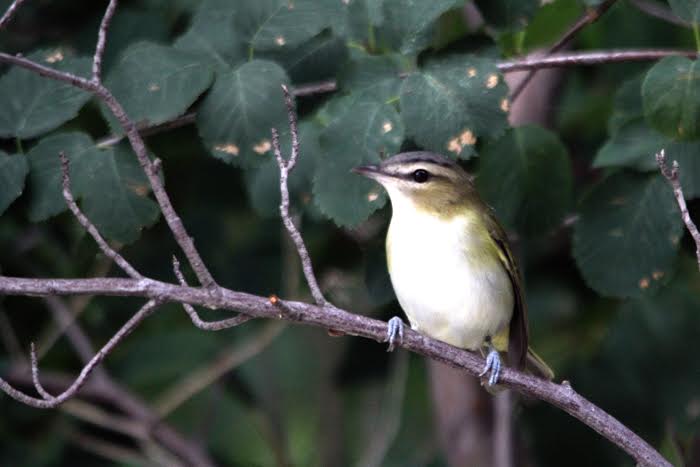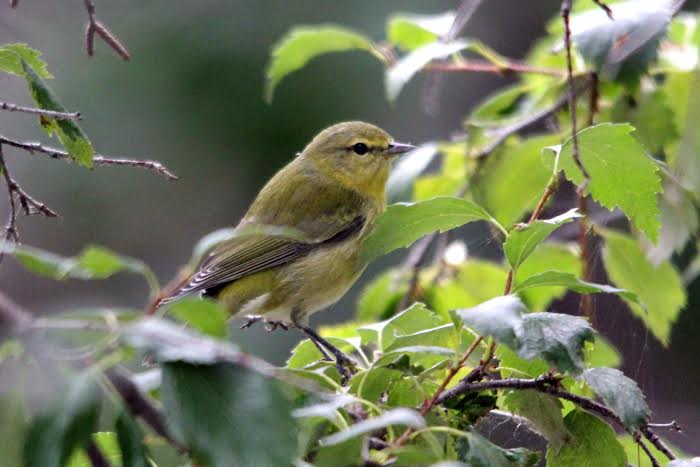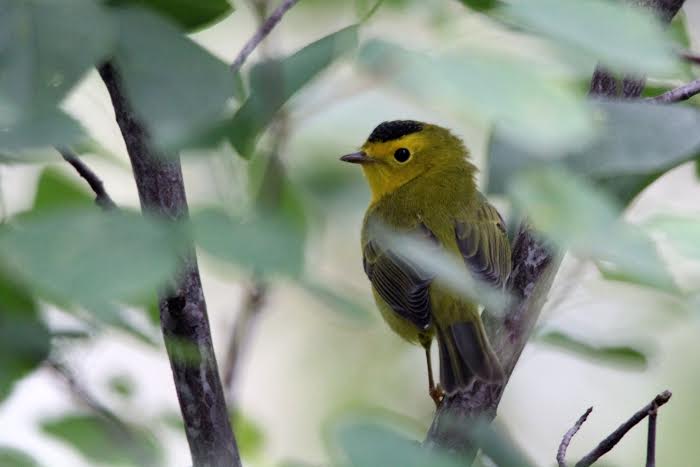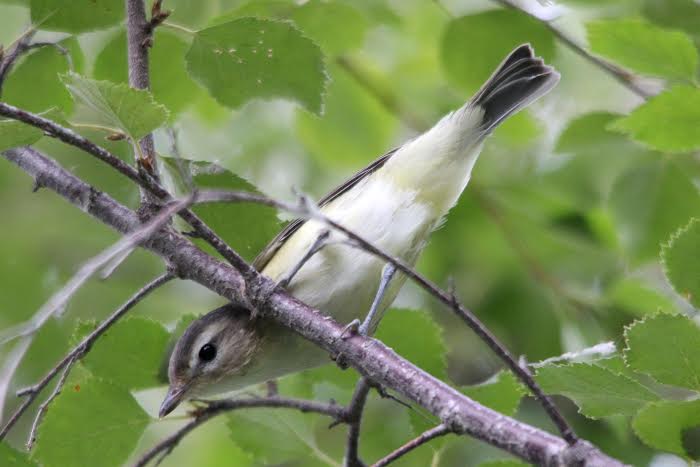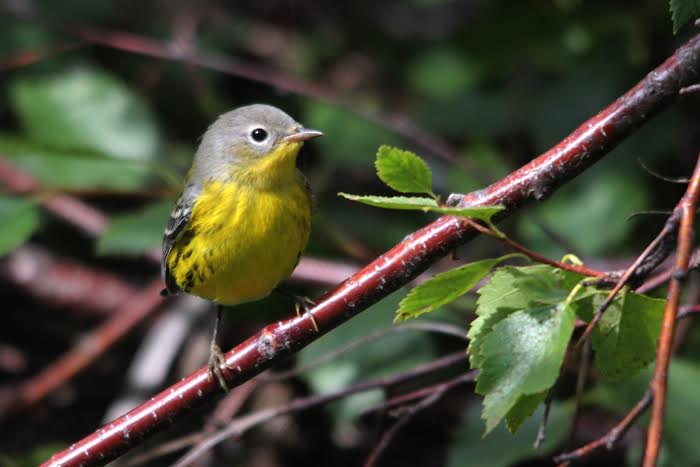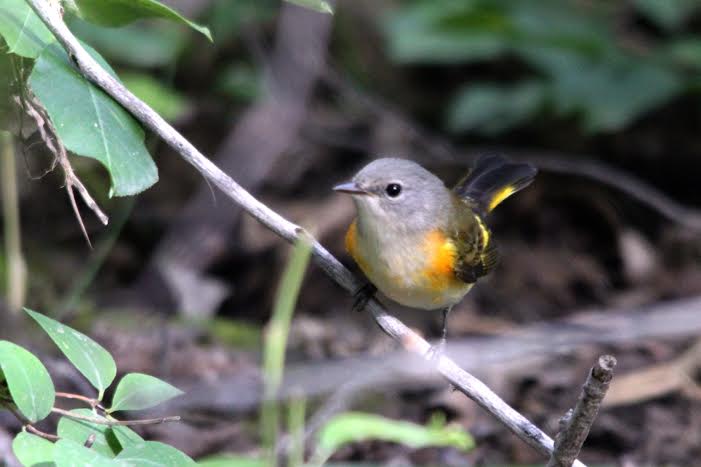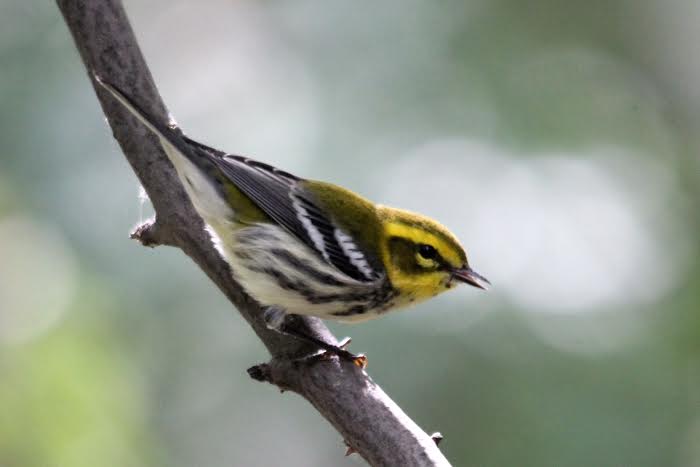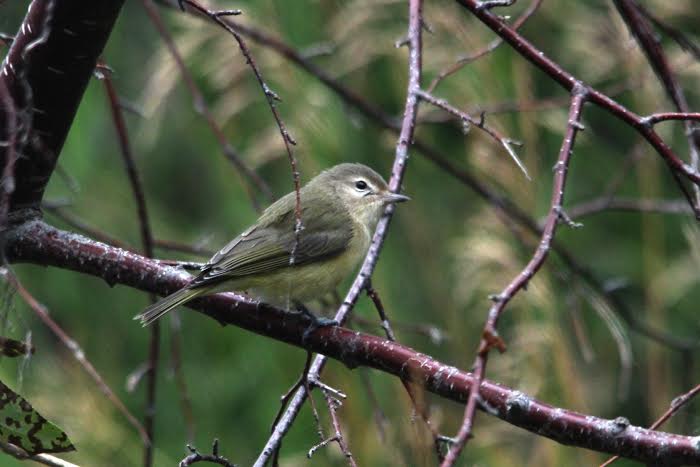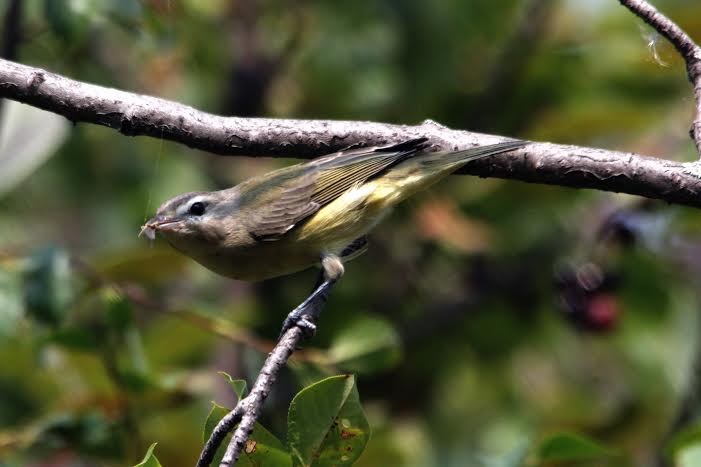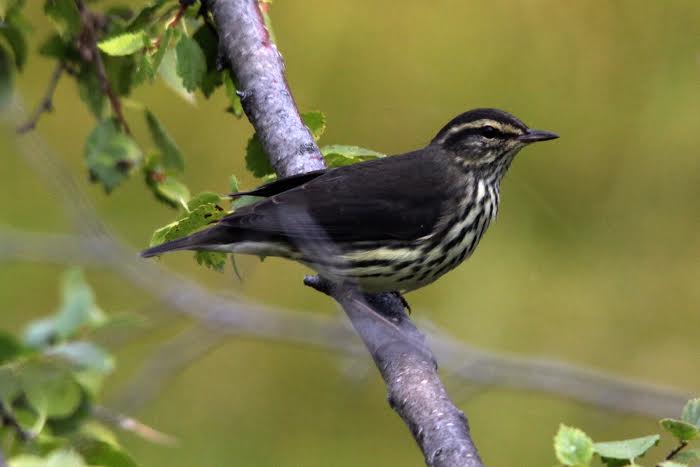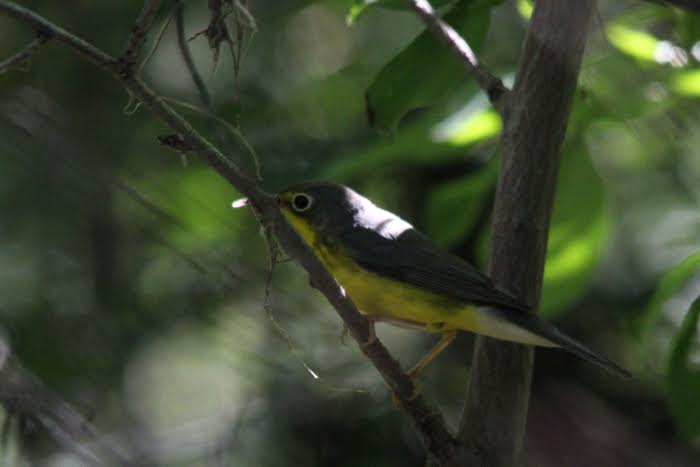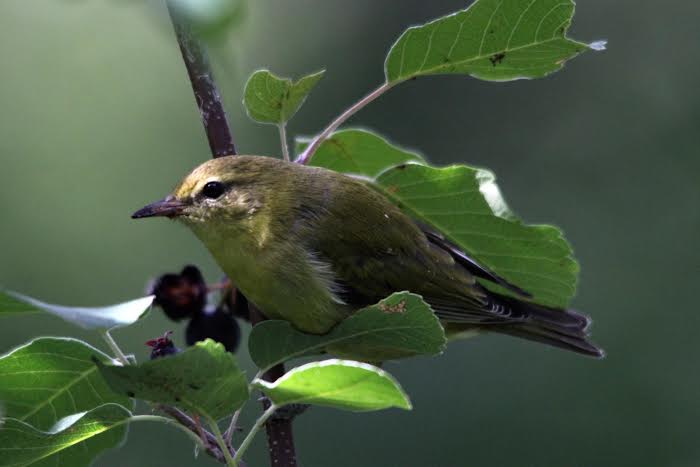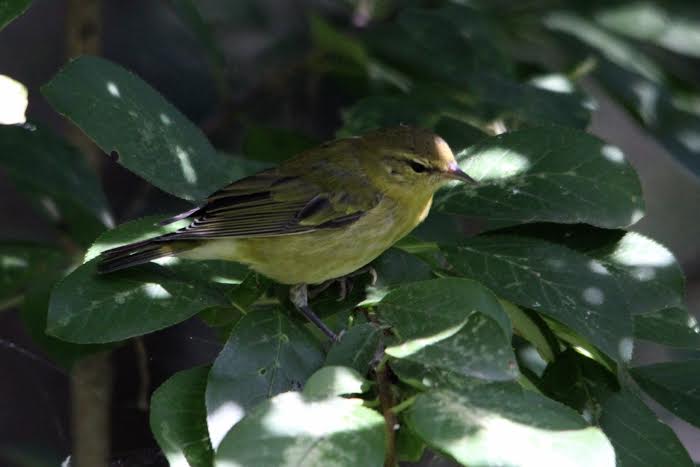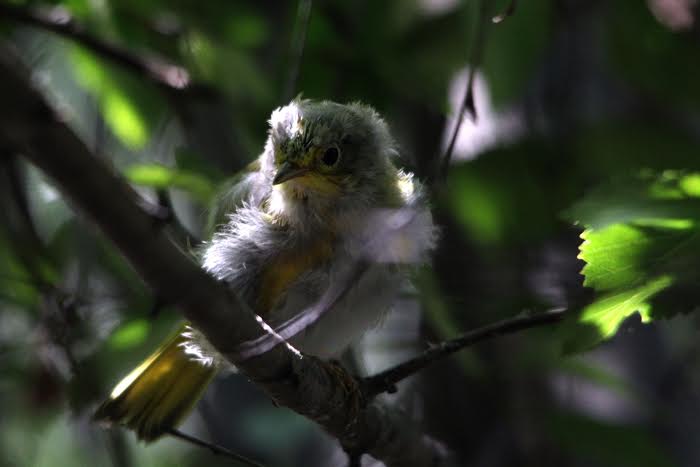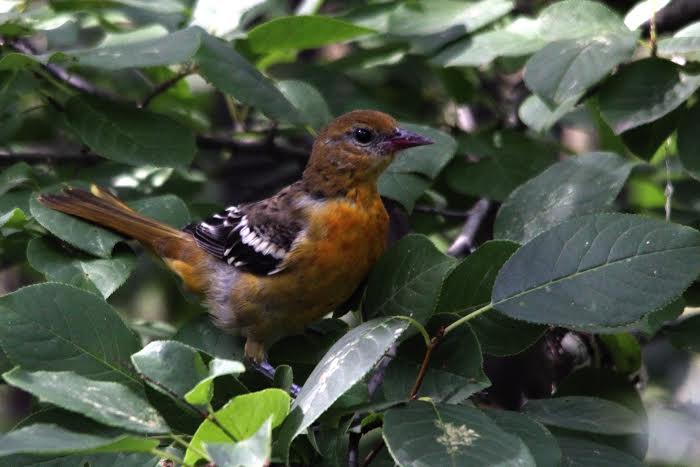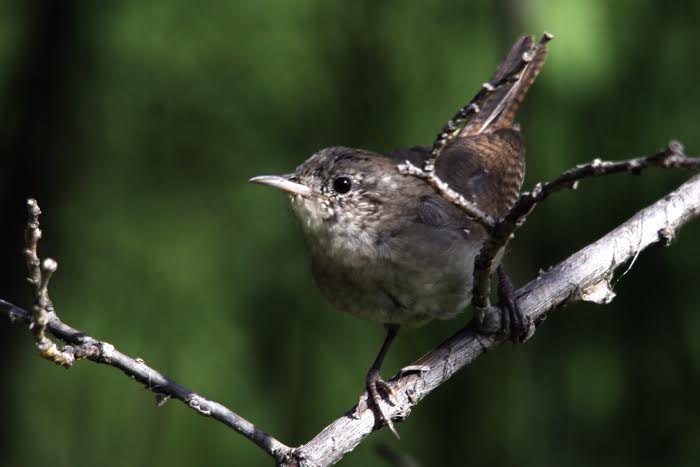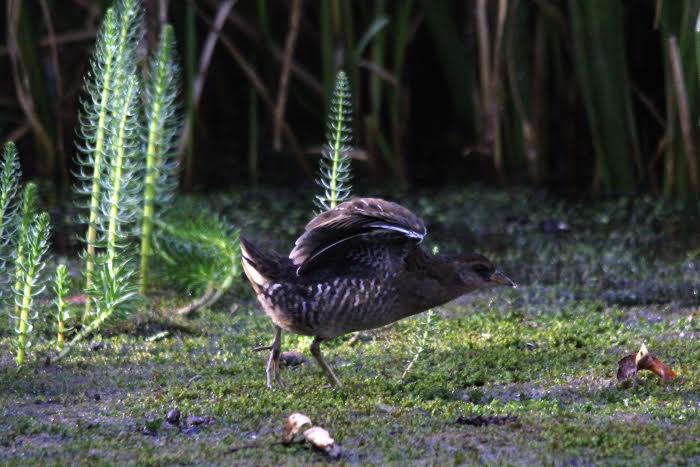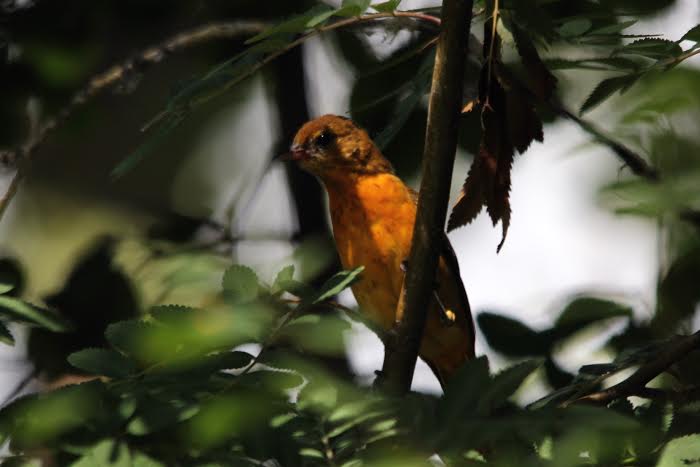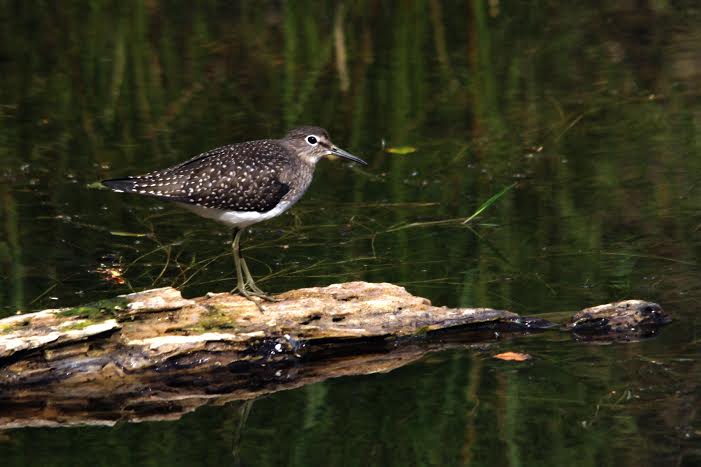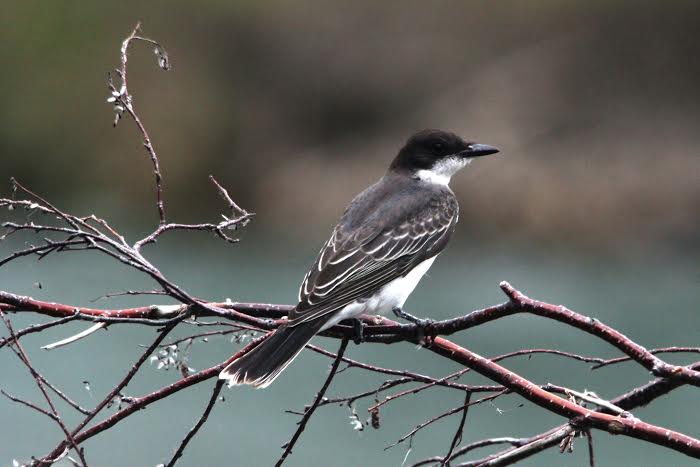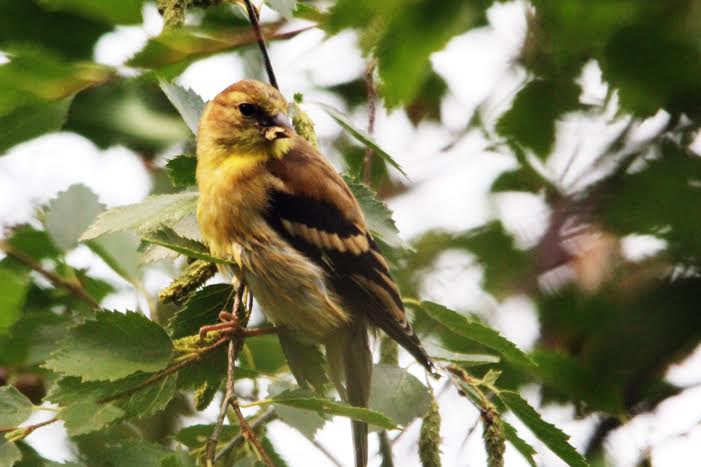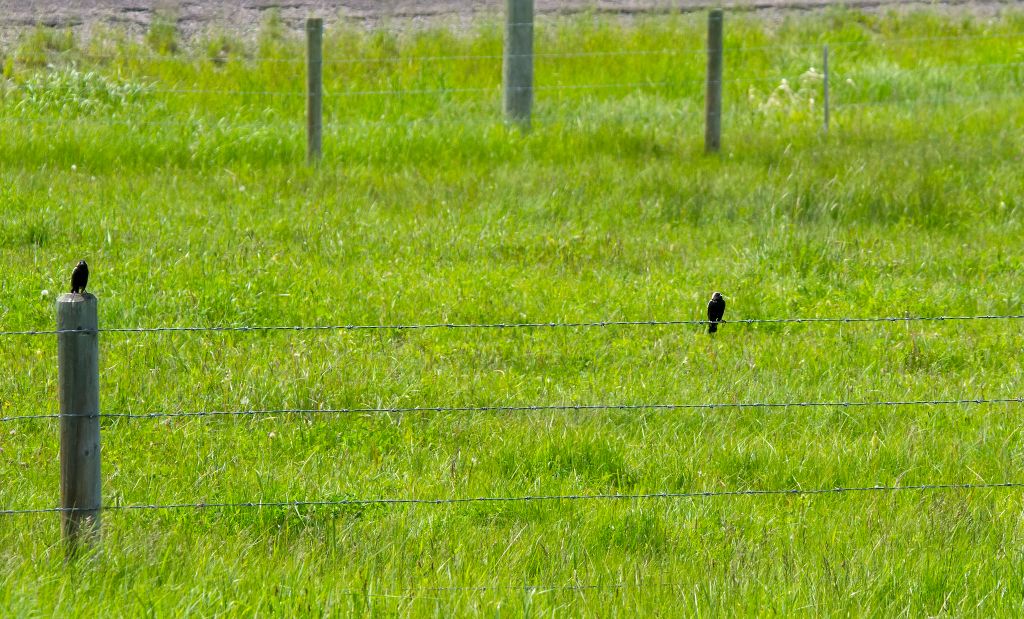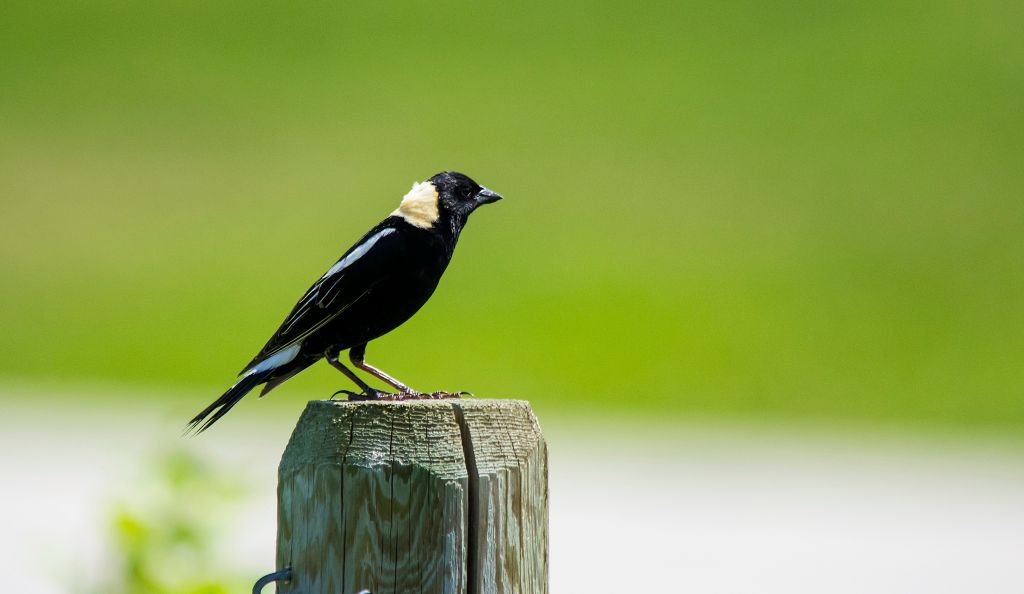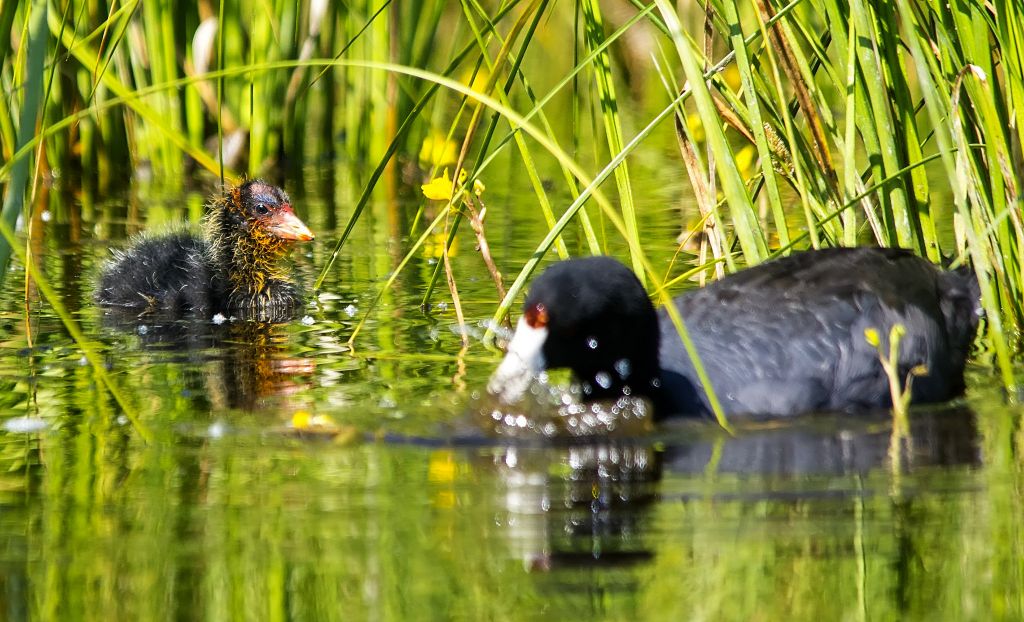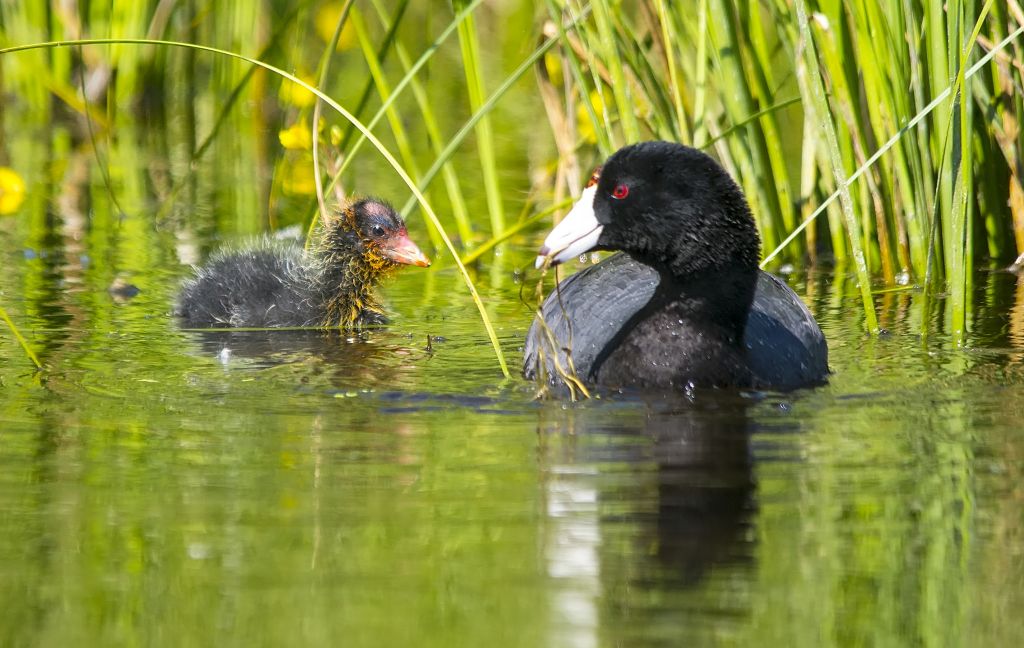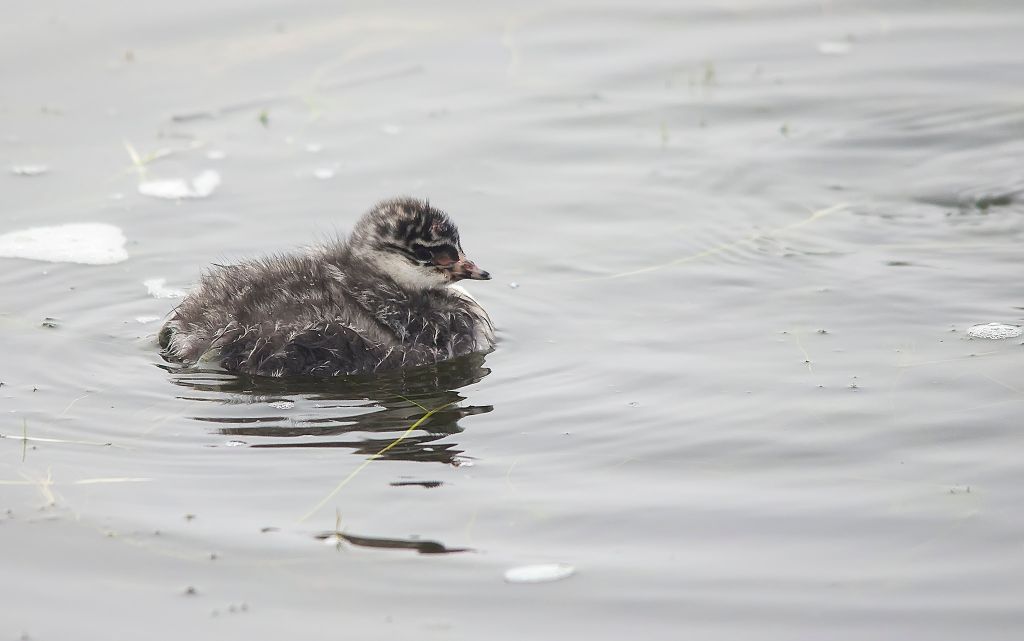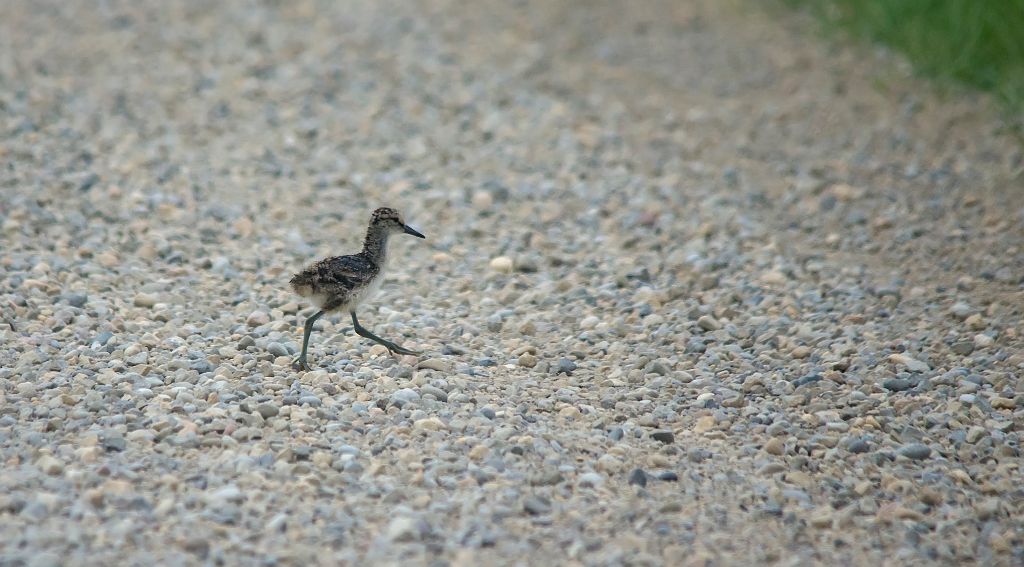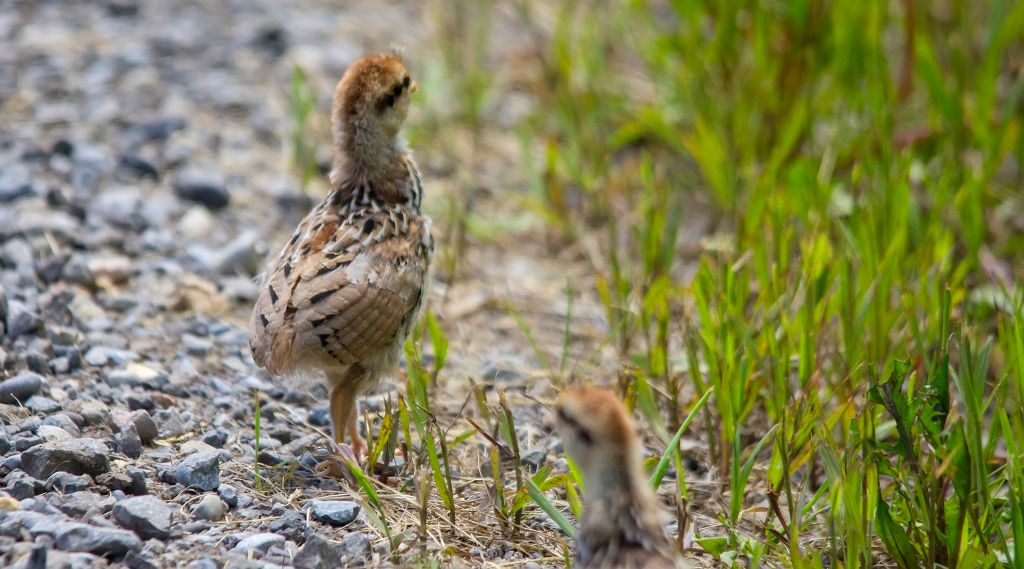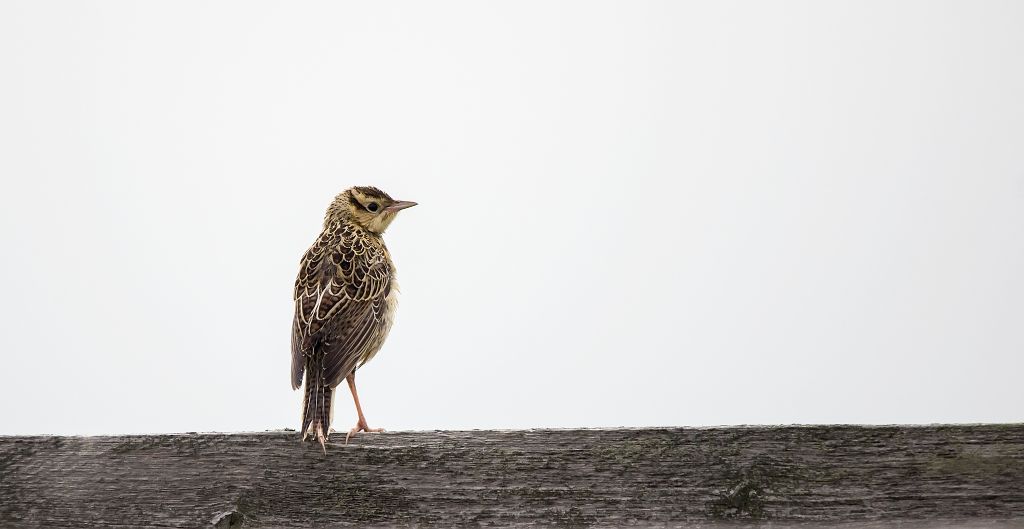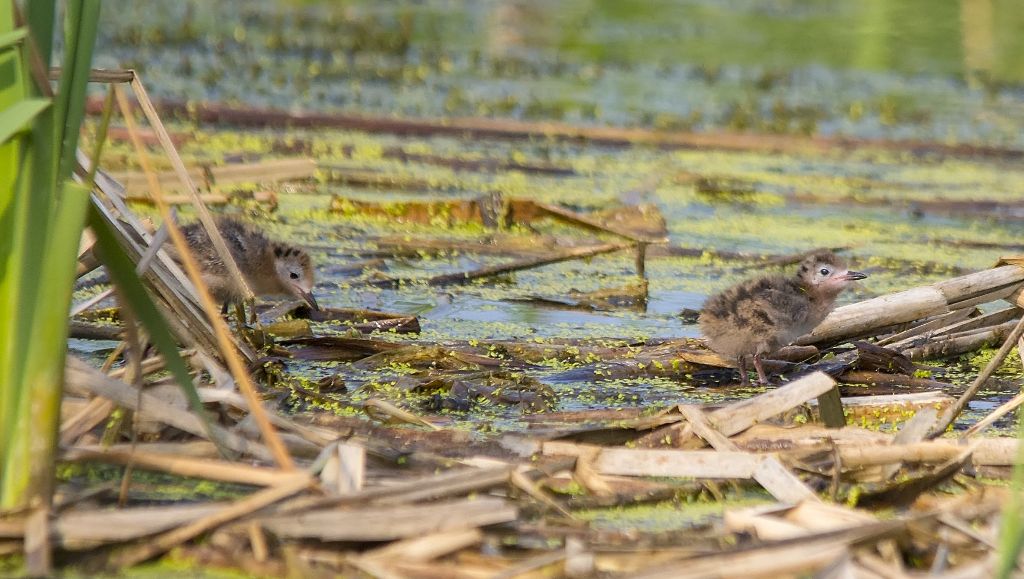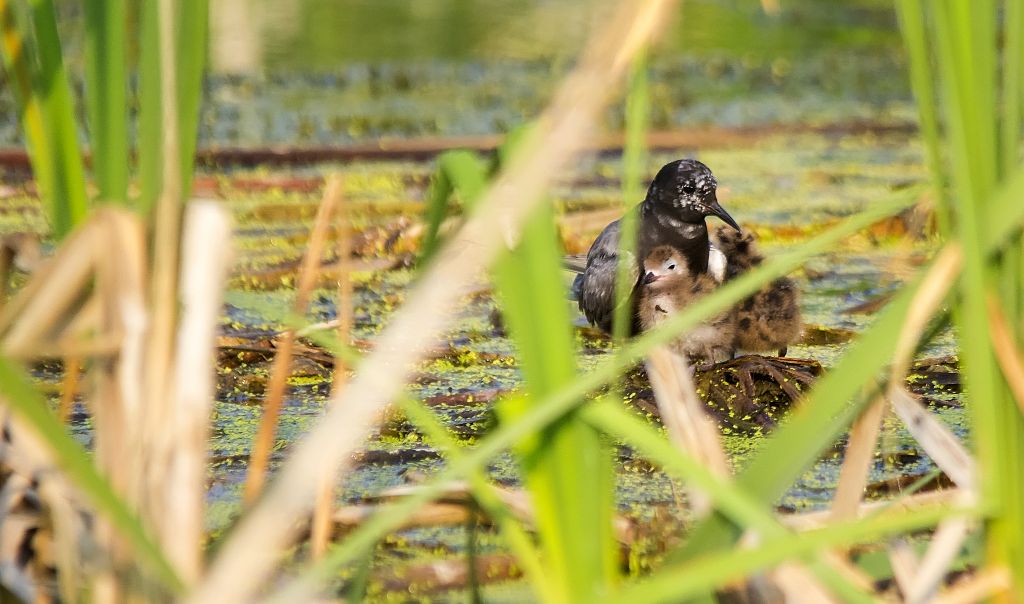Posted by Dan Arndt
With the beautiful weather we’ve had the past couple of weeks, it was incredible to get yet another warm and amazing Sunday morning outing last weekend. While the clouds were thin and the light muted, there were still enough moments where the sun peeked through and really showed off some beautiful colors on both the birds, and on the trees surrounding Calgary’s second largest water body.
With two groups meeting at the same time, my group headed clockwise around the lake, while the other group led by Tony Timmons, headed counter-clockwise. Each group reaped some benefits from that, as some of the birds moved away from us and toward them, and vice versa. There were hundreds of ducks on the lake itself, and hundreds more flying over and flying south for the season. There were a good number of Lesser Scaup, both male and female plumaged birds, which are always nice to see on migration.
Circling the edges of the lake were dozens of Bonaparte’s Gulls. These black-headed gulls (during breeding season) are found further north, breeding in the upper branches of large spruce and pine trees, unlike Alberta’s other black-headed gull species, the Franklin’s Gull, which are colonial nesters throughout the prairies. In their non-breeding plumage, Bonaparte’s Gulls are striking in their pale whites and grays, with their signature black “ear” spots.
While there were over thirty Hooded Mergansers on the lake, there were also quite a few female Common Mergansers in amongst them. This particular girl was a little bit shy from one of the many off-leash dogs running the shores of the lake that day.
We did benefit from the other group pushing this non-breeding plumaged grebe towards us, just when the sun peeked out from behind the clouds. While I believe this is a Horned Grebe, I’m really quite terrible at distinguishing between Horned and Eared Grebes in their non-breeding plumages.
Over on the west end of the park, the parking lot was undergoing some significant construction, and we spotted a few Blue Jays flying over, and a couple of Black-billed Magpies and Rock Pigeons here and there. It was quite fun to watch a few Northern Flickers picking their way across the ground in search of ants or other insects just under the grass.
Along the north edge of the lake the light became a little more tricky to shoot against, as the sun peeked out for longer periods, but the low angle made getting good looks at anything on the water a bit of a challenge. The angle of the light and the purely serendipitous placement of this pair of grebes made for a perfect teaching moment (or at least I’m pretty sure!) showing off the differences between Eared and Horned Grebes in their non-breeding plumage.
Well we neared the end of our three hour tour, once again the combination of accommodating birds and good angles of light made it impossible for me to bypass this pair of incredibly common Mallards and attempt a couple of portrait photos. I was quite pleased with the results.
And so our walk came to an end, but not before a pair of Blue Jays decided to come in and loudly announce their presence. I’ve never had much luck with these guys, but I’m pleased that I was able to catch one a little off guard and in the open while foraging under a spruce tree just meters away from my vehicle.
Thanks as always for reading, and good birding!
